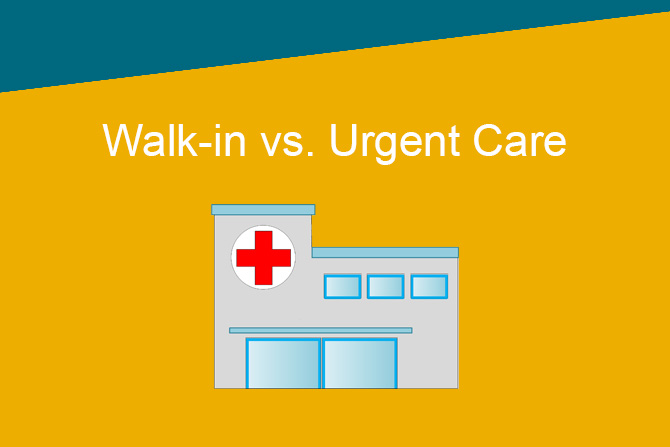Walk-in vs. Urgent Care: What’s the Difference?
January 22, 2019

So you’re feeling really crummy? Or think you’ve sprained your ankle? Or have a child that’s suddenly ill? Is it something that needs quick attention or it’s after hours for your doctor, yet not worth a time consuming and potentially expensive visit to the emergency room?
There are a couple options that are becoming more and more popular for situations like this: a walk-in clinic or an urgent care center. But what’s the difference? And which option best fits your immediate needs?
To ER or Not To ER?
First, let’s take a step back. Why not just go to the ER? There are several reasons why the hospital emergency room should often be viewed as a last resort. From an overall cost of health care perspective, ER treatment can be up to 10 times more expensive than getting the same service at an urgent care center. And high-deductible insurance plans, which are common these days, mean that you may be liable for that large expense.
Many insurance providers, in fact, now actively discourage policyholders from going to an ER with requirements like high co-pays. Also, while the hospital you visit may be “in network,” the physician who treats you may not be, again leading to an unexpected expense. Plus, a hospital with an ER may be a long distance away, and waiting times can be quite long.
So let’s take a look at urgent care centers compared with walk-in clinics.
Is It Pretty Serious?
Urgent care centers can address basic issues as well as more serious problems like stitching up cuts and treating bone fractures. Injuries of this nature are not life-threatening but do require immediate attention.
These types of centers are typically owned by a doctors group, a hospital or independent investors. Their availability usually includes extended hours and weekends. The level of staffing can include physicians, assistants, nurses, nurse practitioners and even specialists like radiologists. Lab services such as x-rays and blood tests are often provided.
Or Relatively Minor?
Walk-in clinics are usually found in an existing retail location like a pharmacy or general merchandise store. In contrast to an urgent care center, staffing is of a different level with primarily nurse practitioners. These folks can prescribe medications, so one advantage of a walk-in clinic can be the ability to fill a prescription right there on site.
As you might surmise, this option is great for minor issues like flu and cold symptoms, respiratory congestion, skin irritations, and simple cuts and sprains. They can also provide flu shots and vaccinations as well as screenings for blood pressure and diabetes.
Plan and Be Prepared
With these basic guidelines in hand, you can ascertain the level of care you need and where best to go. It’s important to know what kinds of facilities are available in your area so you’re ready to access the most appropriate option when the need arises for yourself or your family. And make sure to understand how different kinds of services and providers are covered under your health insurance plan.
Of course, if the condition is severe, you certainly may need to head for the ER. Although the cost is higher, you’ll have access to all the services provided by the hospital. However, when seeking treatment for less critical conditions, options like urgent care centers and walk-in clinics can save you time, money and the inconvenience.










